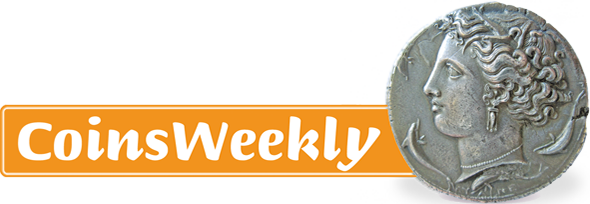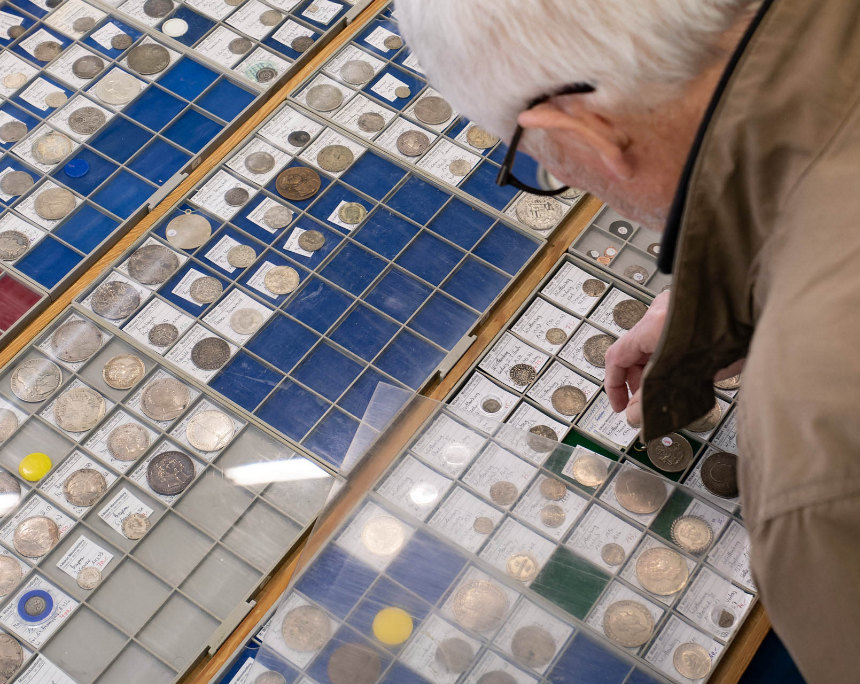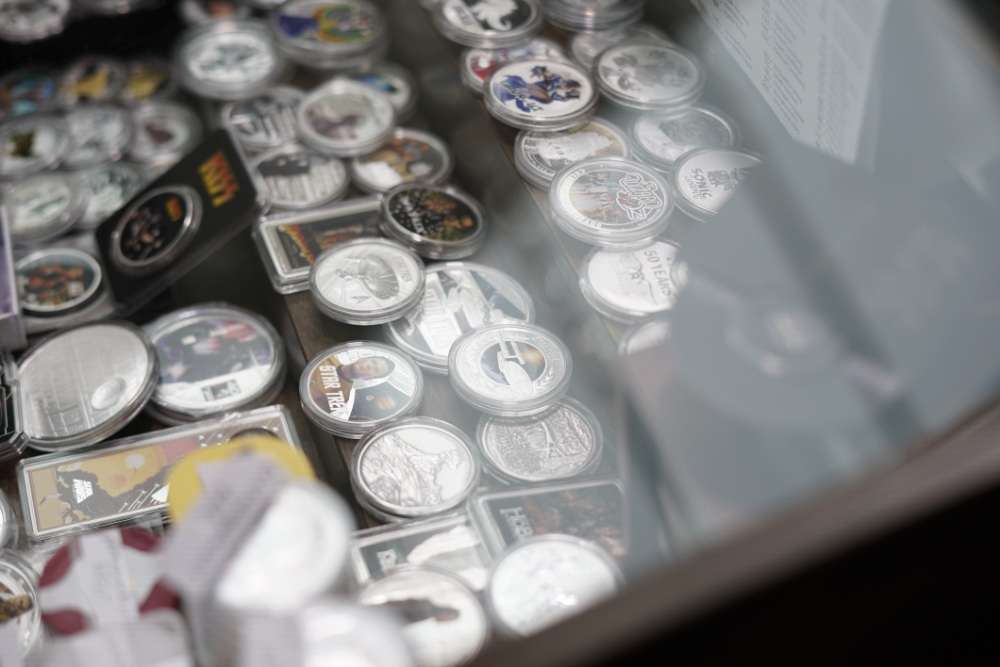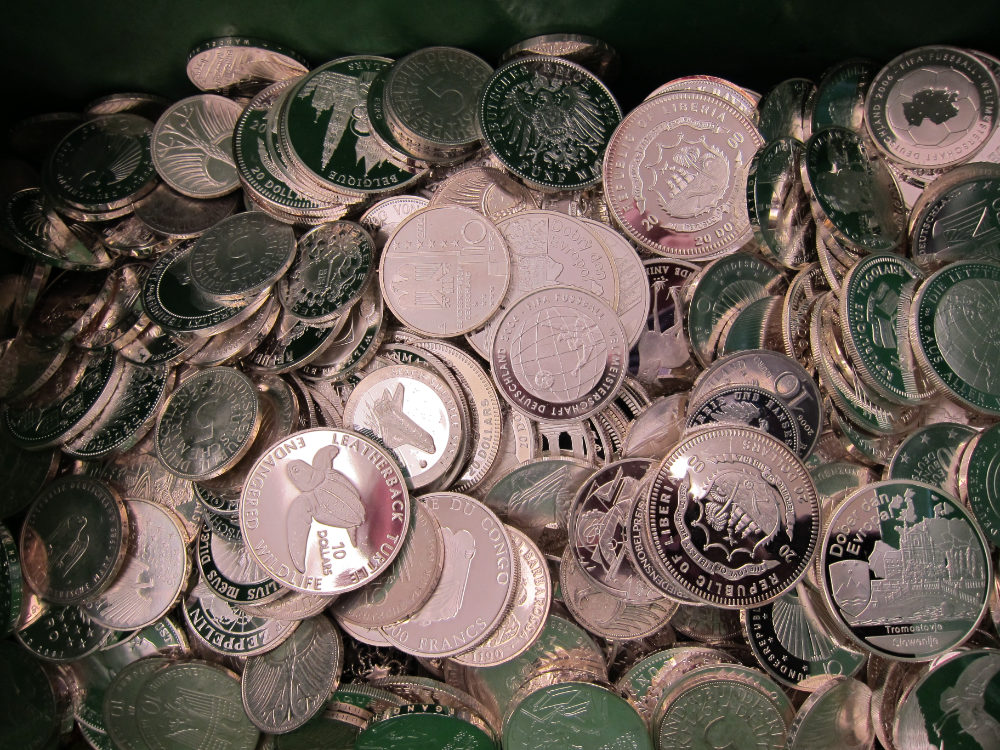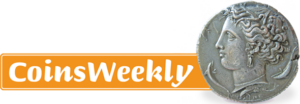From a Collector’s Market to an Investor’s Market: Reasons, Consequences, Opportunities, Part 1
by Ursula Kampmann
Complaining is of no use: change is coming, or may already be here. The question is how to deal with it. In order to develop smart strategies, one must be aware of what is actually happening and why. Ursula Kampmann summarizes the most important changes in the coin world in a loose series. Today: the shift from a collector to an investor market.
Content
Anyone who, like me, has been lucky enough to see some really old collections knows that in the 19th and first half of the 20th century even the wealthiest collectors had a different approach to that of today’s collectors. Their collections contained coins of various qualities, from “fine” to “FDC”, side by side. This is not because the collectors did not recognise or appreciate the difference in condition. On the contrary, we know from letters how important it was to them to buy only those pieces that were of the best quality available. Therefore, the composition of a collections had more to do with the limited choice that collectors had at the time: until well into the 1970s, their local and trusted coin dealer was their main source of supply. This meant that a collector’s place of residence was a decisive factor. If you were lucky enough to live in London, Paris, Vienna or Frankfurt, you had plenty of material to choose from. Those who lived in the provinces, on the other hand, had very limited choice unless they travelled themselves or used a well-travelled agent.
Unsuitable for Investing!
Such collections were valuable possessions. But they were not an investment. After all, an important characteristic of any investment is that it can be quickly converted into money if necessary. This was not the case with coins before the 1970s. Only the most valuable collections were accepted for auction. In most cases, a coin dealer would buy the entire collection and then slowly market it. He would often wait years for the right buyer to come along. In the meantime, he had to finance it. An expensive business! Coin dealers still made a profit because they usually bought the coins well below their current market value. The loser was the collector, who lost a lot of money on his coin collection.
The 1970s
Things are different today. Collectors now have a good chance of making a profit when they sell their coins. This is because coins have become a popular investment. The roots of this change go back to the 1970s.
You will recall that in the late 1960s the dollar came under pressure as a global reserve currency. The military ambitions of the United States were consuming billions and billions of dollars, which were simply generated by the printing press. This had an impact on the dollar’s gold backing, as the relationship between the amount of money in circulation and the gold reserves at Fort Knox changed dramatically. European governments were no longer prepared to support this monetary policy by making costly investments in a favourable gold rate. First France withdrew, then – in 1968 – the other Europeans. This forced the US President to react: on 16 August 1971, Richard Nixon announced that the US dollar would no longer be pegged to gold. This is now known as the Nixon shock, which not only led to inflation, but also caused the price of gold to explode: on 31 December 1975, an ounce of gold cost $148.80 on the New York Stock Exchange; on 21 July 1978, it was already at $200, and just under a year later, at $300. The price reached $400 on 17 September 1979 and $500 on 19 December 1979. In January 1980, the price finally went through the roof: $607.80 on 3 January, $722.40 on 14 January, $854.80 on 18 January.
There is an old coin dealer’s rule: the price of gold and the demand for coins are proportional – after all, both phenomena are driven by the same fear, the fear of uncertainty and inflation. It forces everyone to think about how to protect their savings. Some buy property, others whisky, precious stones or coins.
An Investment for the Common Man
Coins, like gold, have one major advantage for middle-class buyers: they are available at all price levels. Coins can be bought with virtually any income, whereas property, for example, is often beyond the means of a small collector. Buying coins is also relatively straightforward. You don’t need a lot of expertise, a custody account or a bank.
Add to this the fact that ownership of coins cannot be controlled by the state, that you can take them with you wherever you go and that precious metals are a survival tool anywhere in the world – you can see why investors love coins.
Coins Become Investment Objects
Coins became an investment in the 1970s. At that time, many people who had not previously collected coins began to buy them. This multiplied the size of the coin market and led to an increase in the number of full-time coin dealers, including many young newcomers.
Very few of them had the money to build up extensive stocks and buy large collections. They relied on auctions without their own stock. This created a competitive situation in favour of the seller. He now had the opportunity to sell his coins at any time – either by auction or by direct sale, and in both cases he could compare various offers. Coins were thus given a monetary value that could be liquidated relatively quickly. Collectors could find out this value before a sale. Many publishers produced catalogues on the various numismatic fields, providing appraisals for different types of coins.
But something else happened during these years: coins became a commodity whose sale was organised according to the laws of the market economy. Target group analysis, advertising, customer loyalty and motivation to buy found their way into the PR departments of the coin trade. This created a whole new group of companies: direct marketing agencies.
Their concept was to make buying coins as easy as possible for customers. Coins were sold by subscription. These subscriptions were tailored to specific target groups. Potential customers were sought through advertisements that were not published in the numismatic media, but in the media that the target group preferred to consume. This could be a tabloid newspaper or – later – a shopping channel on television.
This marketing model only worked, and still works, because a lot of money goes into advertising. It therefore required coins that were worth the effort, i.e. that could be bought at any time in large enough quantities to make it worthwhile. Contemporary commemorative coinage proved to be an ideal product for this form of the coin trade.
As state mints were unable to supply sufficient quantities quickly enough, private mints stepped in to fill the gap. They cooperated with the ministries of finance of those countries that were prepared to offer their minting rights for a fee. The result was what we know today as non-circulating legal tender. The images on these coins say little about the country on whose behalf they were produced. They are based on what sells best in the major collector markets of Western Europe and the USA.
The central selling point of all direct marketing agencies remained the potential increase in the collector’s value of an item. Advertising strategists had understood that the easiest way to take money out of the customer’s pocket was through their own greed. Coins that seemed certain to increase in value still sell like hotcakes today.
Although many reputable coin dealers tried to discourage their customers from getting their hopes up, their warnings were overshadowed by louder voices. Countless media outlets published lurid stories of dramatic increases in the value of an unremarkable coin. No one mentioned the fact that, like ANY investment, the value of a coin can go down as well as up.
The Great Disappointment
So it came as a surprise to many when the collapse of the Hunt Brothers’ silver speculation in March 1980 also wreaked havoc on the coin market. Suddenly many investors were rubbing their eyes and asking themselves: what am I doing? Demand collapsed, new issues from the mints were left lying around, and auctioneers tore their hair out over all the returned items.
In the years that followed, many coin shops were forced to close, especially those that catered exclusively to wealthy investors, such as Numismatic Fine Arts in Los Angeles.
But on the whole, after a moment of shock, the serious coin trade continued as before. Of course, the interest in coins did not disappear. Many collectors were happy to be able to buy their coins at an unbeatable price. This meant that coins retained their monetary value even during the crisis. But it was much lower than it had been a few years earlier. In other words, it was what we know from the stock market as a bear market. Investors who wisely invested in coins in the late 1980s and 1990s are now enjoying exorbitant returns!
Some Important Lessons – No. 1: Don’t Buy Medals
We have just learned that coins retained their collector’s value (or face value); this was not true of the majority of contemporary medals. There were too many cheaply produced medals for which the buyer had paid an excessive premium. They experienced two losses at once: the metal value had fallen dramatically and no collector was interested in purchasing these abominations. All the expensive series of medals ended up in the smelter – if they were made of precious metal at all. The fact that the modern medal still has such a bad image is due to the price collapse of the 1980s.
Unfortunately, these cheap medals also dragged down the price of precious medals of the past. By the 1990s, medals were selling much more cheaply than coins of comparable rarity. Now medals are fetching higher prices again – but they are still considerably cheaper than comparable coins, even though medals are actually produced with more care and are more attractive than a country’s official coins.
Some Important Lessons – No. 2: State Commemorative Coins
State commemorative coins have also seen a huge drop in value. The best-known example are probably the Russian Olympic coins minted for the 1980 Olympic Games in Moscow. Marketed at a high silver price with a generous premium, they suddenly had only their precious metal value. Many buyers were so frustrated by the offers they received for their expensive pieces that they left them at home. Those who did so were able to enjoy a dramatic increase in value after a few years. This was because the Russians, who had finally gained access to the international coin market after the opening of the Iron Curtain, bought back their commemorative coins with enthusiasm (and a lot of money).
Some Important Lessons – No. 3: Only Rare Coins are Good Coins
This revealed the immense importance of a coin’s mintage figure. Coins of which only a few specimens had been produced rose in value considerably more than comparable objects with a large mintage figure.
Some investors went on to consider the importance of the potential customer base in this context. As a result, Chinese commemorative coins experienced a huge boom not only in Asia but also among Western speculators. They bought them because they realised how huge the pool of potential Chinese collectors was. Since then, the hype has died down somewhat and prices have fallen slightly.
Some Important Lessons – No. 4: Quality is Paramount
We must understand that the changes of the 1970s were irreversible. The coin trade had become an international phenomenon. In practice, this meant that a collector could choose from a much wider range of coins. As a result, the price gap between coins in average and above-average condition widened.
We all know that coins in mediocre condition are common, while coins in above-average condition are few and far between. With coins in mediocre condition, a customer could therefore wait until he found a piece at a reasonable price. The price became the deciding factor in the sale of such coins. On the other hand, if you wanted to buy an exceptionally well-preserved coin at auction, you had to compete with bidders from all over the world. Anyone who wanted to secure a coin under these conditions had to spend a disproportionate amount of money.
The second part of this article will be published on February 27, 2025.






